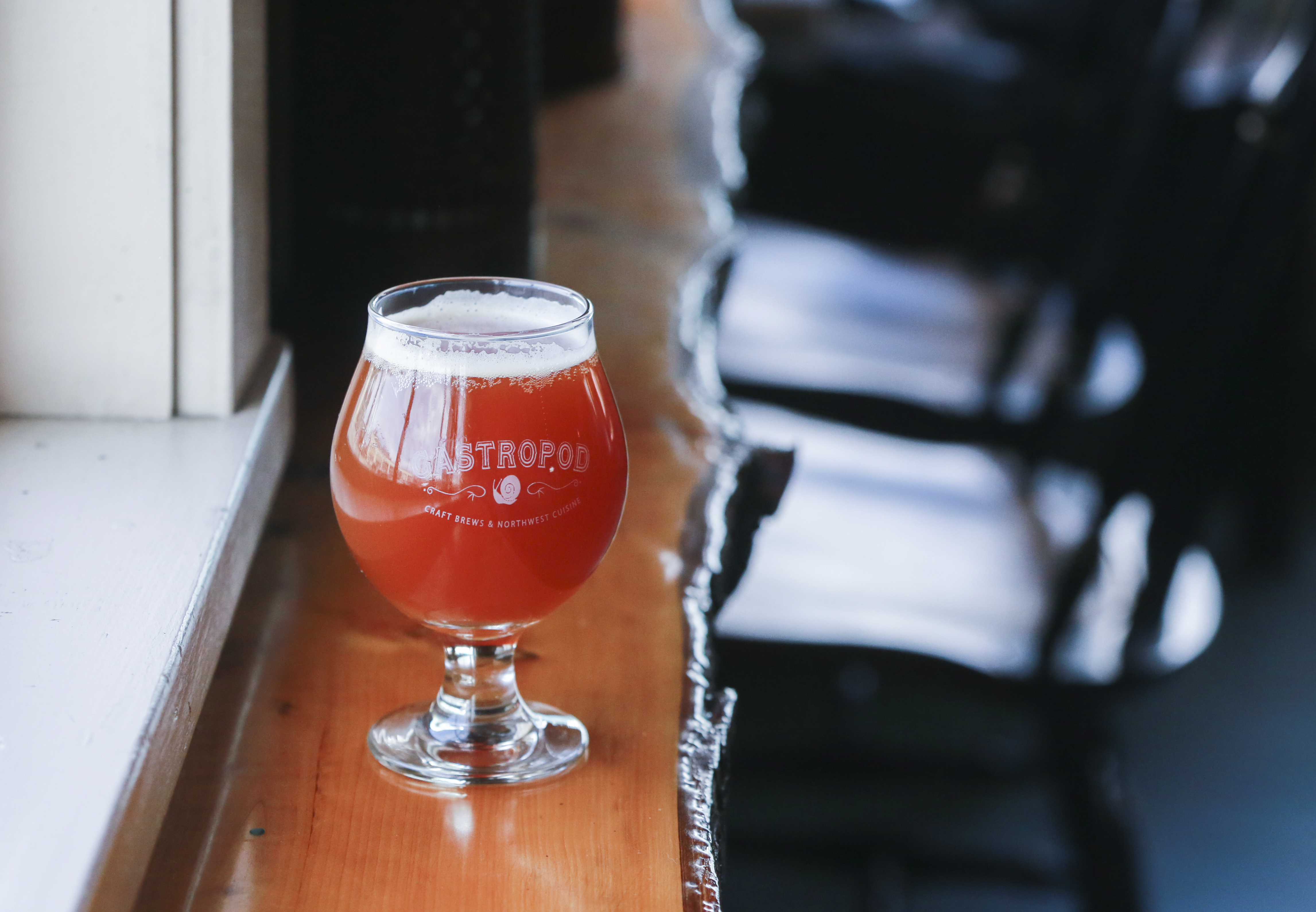When you consistently sell out of food at pop-up events; when your food truck regularly attracts long lines of customers; and when your truck hits #9 on The Daily Meal’s list of the 101 Best Food Trucks in America, it’s probably safe to say you’ve earned a place in a bona fide brick-and-mortar establishment. Which is exactly where Matt Lewis is about to be, when he opens Roux any day now.
The New Orleans–born chef, who’s wooed Seattle eaters with his Where Ya At Matt food truck since 2010, has worked in the restaurant industry for 14 years and says he’s always dreamed of owning his own restaurant. After graduating from the Culinary Institute of America in Hyde Park, N.Y., Matt “threw a dart at a map” and ended up in Seattle, working at the Four Seasons, Restaurant Zoe, Canlis, and Toulouse Petit before opening his food truck. To him, Roux is the next step in a natural trajectory he’s been on since he started cooking with his mother and grandmother back in New Orleans. “I think once we saw the response that we’ve gotten from the truck as far as social media and everything,” he says, “I kind of knew that if we went towards the restaurant, we could make it happen.”
Last March, Lewis first announced he was taking over the former Buckaroo Tavern space in Fremont, and then set to work on the financing of Roux. “That’s a whole other job in itself. A whole other animal to deal with. It’s a lot of money to put together to open a restaurant and a lot of different personalities from banks to private investors to deal with, so [that] always takes longer than what you think. I definitely got some new gray hairs in,” Lewis says.
Roux is financed in part through community contributions in a project he dubbed “The Louisiana Purchase”: Supporters buy into the restaurant and receive a gift card worth 125% of their donation, with other perks depending on the donation level.
Despite those gray hairs, Lewis says many aspects of running a restaurant will be easier than operating a food truck. For starters, restaurants can’t break down. Earlier this month, the truck had some mechanical issues and had to cancel several appearances; a tow truck delivered it to the Seattle Street Food Festival. Food trucks also depend on catering events and festivals, whereas restaurants have a steadier clientele.
“There’s so much work that goes into a truck . . . I think anyone you talk to that goes from a truck to a restaurant always says a restaurant is easier in a lot of aspects. So although trucks are less expensive then a restaurant, I’m looking forward to the operational side of things because I feel like it will be easier,” Lewis says. Lewis is also stoked to have a roomier kitchen and more storage. “My walk-in at the restaurant is the same size as my entire truck,” he says.
Food trucks, by law, must complete all prep work at a designated commissary outside of the truck. “If you forget something in your commissary kitchen on the truck, you’re out for the day. There’s no walk-in, let-me-grab-it. Just the logistics can drive you nuts if you’re not organized,” Lewis says.
Still, Lewis remains realistic about the challenges of starting a restaurant. The biggest thing with the restaurant is getting people in your doors and feeding them,” he says. “I’ve seen a lot of good restaurants not make it for that reason, whether they chose the wrong location or they just weren’t good about marketing or getting that break. There’s a little bit of luck involved in everything we do in this business.”
But Lewis certainly has more than luck going for him. On a recent sunny afternoon in Georgetown, Seattle Weekly’s food editor walked by The Mix, a bar/music venue that also serves Cajun food. A couple guys were sitting outside eating bowls of jambalaya; one was from New Orleans, the other from Mississippi. When she asked them about the food, they shrugged their shoulders and pronounced it “so-so, not the real thing.” For the real thing, they unequivocally agreed, “you gotta go to Matt.”
Roux will be open morning, noon, and night, serving a mix of New Orleans and Southern staples. For lunch, you’ll find much of the same fare as the food truck offers: gaping po’boys stuffed with fried shrimp; oysters or house-cured andouille sausage; meaty, salty muffulettas, a sandwich invented in New Orleans; thick gumbo over rice with okra and more of that andouille; and spicy, creamy jambalaya.
But dinner will be a different story. “You’re going to see anything from wild game to what we call yard bird—which is chicken, but I’ve always called it that. It’ll be done really well, the crispy skin and the juicy meat. Just that Southern style. We’ll have frog legs, oysters on the half shell that we’ll rotate through . . . snacks, small plates, and then entrees,” Lewis says.
He plans to draw from Northwest farms and purveyors as much as possible, so you may see a spicy Dungeness crab dish or local shrimp in your shrimp-and-grits. He also plans to have a steak on the menu for about $20, but that will be the most expensive item. Chicory (a root that New Orleanians used as a coffee substitute whem embargoes prevented them from importing coffee during the Civil War) will also make an appearance in cocktails and in a beer crafted with Dick Cantwell of Elysian Brewing. And, of course, Roux will offer New Orleans and Southern classics like Pimm’s Cups, Sazeracs, and mint juleps.
food@seattleweekly.com







